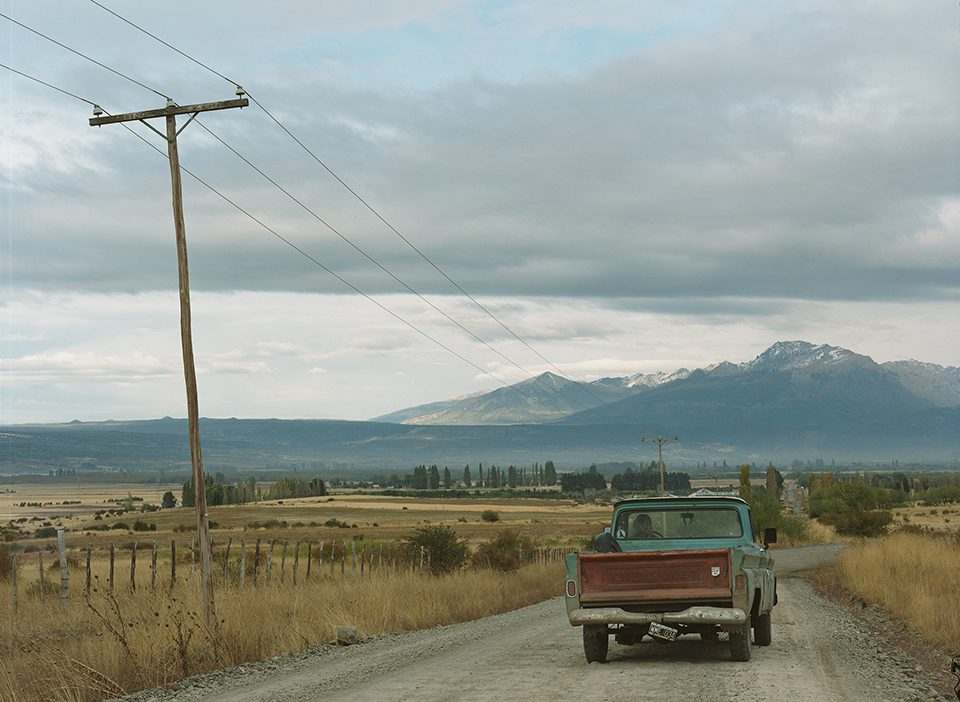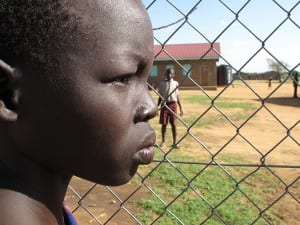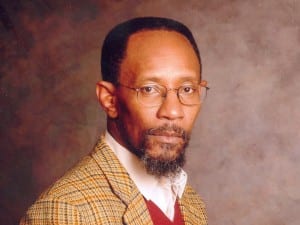Marc Evans’ latest film, Patagonia, looks at the idea of homeland, history and belonging through a parallel narrative.
On first impressions there’s a glaring disparity between the bleak hills of rural Wales and the vast landscapes of Patagonia, but as a lonely settlement in a far off land, for Welsh schoolchildren the southerly region of Argentina remains something of a legend, played out by their own people across the globe. For many Europeans their legacy of colonialism is a given. For the English it is manifest in the dominance of American culture on television, in the banking call centres in India, and in the ease of travel when the “international language” is your mother tongue. For the Welsh there is no such legacy, and so the distant land of Welsh-speaking gauchos and rolling plains is a source of endless fascination, something Marc Evans chose to harness in his spectacular road movie, Patagonia.
Evans’ previous films include Resurrection Man (1997), My Little Eye (2002) and Snow Cake (2006), but Patagonia is his first film in his native language, as the dialogue flits between Welsh and Spanish throughout the film. As a Welsh-speaker, he reiterates the unique appeal of Patagonia: “The existence of Welsh speaking cowboys riding the desert plains of Argentina has an obvious romance, especially as the history of the Welsh abroad has generally been inconspicuous … To hear the language spoken, especially with an enchanting Spanish lilt, by Welsh Patagonians is quite extraordinary.” While taking on a challenging duel narrative, language lies at the heart of this film – it is through preservation of language that the Welsh came to Patagonia, as a place where they could go about their customs with ease, and with the language (or its loss in the case of elderly Patagonian Cerys) the viewer gains “a sense of its history, the political struggle that has kept it alive and a sense of belonging to an older rural culture where the language was more dominant and central to everyday life.”
Gwen and Rhys are a young Cardiff couple, struggling to conceive and deal with the strain that Gwen’s (secret) infertility is placing on their otherwise loving relationship. When Rhys, a studious and dedicated photographer, sets off on an assignment to capture the Patagonian Welsh chapels Gwen tags along on his trip, hoping for the escapism travelling adventures often promise, but seldom deliver. Evans acknowledges this as part of the mystical pull of Patagonia, whereby “it has a flag but no boundaries. It can, in a sense, be what you want it to be, a template for the imagination.” Accompanied by the rough and ready Patagonian cowboy Mateo on their excursions, Gwen’s desire for a relaxing break clashes with Rhys’ work commitments and their relationship disintegrates at an alarming rate. Meanwhile, the elderly and headstrong Cerys departs from her rural village for Buenos Aires under the pretence of having a cataract operation. Accompanied by her young, reticent neighbour Alejandro, the operation soon emerges as a disguise for her plans to return to her ancestors’ home-farm in northern Wales, a land of equal mysticism, on which she has never set foot. Henceforth journeys dominate the narrative, while stunning and contrasting landscapes dominate the cinematography, and Patagonia becomes simultaneously an epic love story to the land, and an intimate unearthing of two women’s discoveries of their sense of self.
Producer Rebekah Gilbertson, Evans and Nia Roberts (Evans’ wife and the actress who plays Gwen) originally travelled to Patagonia to follow in the footsteps of the first Welsh settlers and here the ideas of travel and belonging collided for Evans into the concept of two narratives. With the initial concepts for Patagonian and Welsh travellers stemming from here, Laurence Coriat was drafted in to write the screenplay, the basis of which immediately appealed: “Marc already had the set up in place: the two parallel stories and the themes and ideas. I liked the idea and rhythm of the two stories and the way they fed off each other. I don’t necessarily write in a conventional way with a three-act structure, so this was interesting to me.”
With two disconnected narratives, “the film is made in the edit,” and although they remain separate entities throughout the film, there are strong parallels between the two stories, particularly between the female protagonists. “They are both missing something in their lives: Cerys a sense of where she’s come from and Gwen a sense of where she’s heading.” Furthermore, both Cerys and Gwen represent a very particular time, “their problems seem emblematic of their respective eras,” and together they confirm the eternal struggle to know oneself through the importance of history for Cerys, and making mistakes for Gwen. In their relations with others, the two women present further contrasts – Cerys the resignation of one who is often overlooked in society but determined to have her way, and Gwen the vanity of playing for male attention as a qualification of her worth, but still led by and submissive to, a rotating duo of suitors. As unlikely travelling partners, Cerys and Alejandro forge a comforting, if predictable dynamic, because Cerys is so willing, in spite of it being her journey home, to place the emphasis on the young man. Constantly urging him to discover more, be open to adventure and find himself many romances, Cerys dreads the concept of his wasted youth and exerts a wisdom equal to her years in breaking down the clunky symbolism of him re-reading the same book in warm and witty asides. Cerys drives the Welsh narrative, while Gwen is driven by the nostalgic masculinity of Patagonia and its native romeo in a manner reminiscent of modern womanhood: “She has had many more freedoms and made more choices than her forebearers, but finds herself trapped and isolated in a different way to Cerys.” Patagonia is an intriguing exploration of the feminist debate over autonomy.
Running alongside the focus on Cerys and Gwen however, Alejandro’s adolescent transformation, from introverted, unsure and sombre teenager, to Argentinian adventurer, bedding the local girls and keen for more explorations is wonderfully pared down, in spite of its potential to be over-acted: “In a sense, the end of Cerys’ journey is just the beginning of Alejandro’s.” With a cameo from singer Duffy, Alejandro opens up in a romantic escapade of his own, of a more obvious hue. While neither story in Patagonia is particularly unpredictable, and Alejandro’s coming-of-age even less so, the character transforms heart-warmingly through Nahuel Perez Biscayart’s acting. He is quietly brooding in stark contrast to the vivacious Mateo, and the stiff, British Rhys, and embodies a kind of rural naïvety that has been almost lost in the UK by virtue of our repeated exposure to popular culture. Cerys’ resignation to old age and the manner in which she looks instead towards Alejandro’s future creates a real sense of the cycle of existence: “We very much wanted to enjoy that idea of an old person’s view of the world influencing a young person’s and for the journey to be a rite of passage for Alejandro as they travel further into the Welsh interior.” The warm and unexpected focus on Alejandro is a product of the organic nature of the film’s making. “The story is not complicated. We wanted a feeling of freewheeling and the freedom of a road movie and to try and get the oxygen of the place in the film to allow us a bit of a leeway to be a little less conventional with the narrative. It’s as much about travelling as arriving.” This freewheeling nature reflects itself in the revelations of the supporting cast. Alejandro’s growth is mirrored in Rhys’ passion and anger at discovering Gwen’s infidelity, and again in his unlikely alliance and banter with a local homeless man. Only through stepping away from his camera does Rhys see the beauty and lessons of the Patagonian desert, as if its mighty presence is too big to be confined to a lens.
Indeed the dramatic landscapes of both Wales and Patagonia take centre stage in the film, aided by breathtaking cinematography, and a dedication to capturing the lands that have enchanted Gwen and Cerys in turn. Shooting took place over seven weeks, in the Patagonian autumn, then straight onto the Welsh spring. Gilbertson explains: “The landscapes are so majestic in Patagonia, you go from the dust and the desert to the Andes and snow-capped mountains. We wanted Wales to look as impressive. I grew up in Snowdonia and we shot part of the film there and it is absolutely breathtaking. The dusty landscapes of Patagonia and the industrial towns of Wales going up to the mountains of the Andes and Snowdonia are both fantastic.”
At the hands of Robbie Ryan, Director of Photography, the cinematography underlines the film’s romantic allusions. With sweeping shots of expansive pampas, interspersed with homely rows of Welsh terraces, grey slate glistening in the rain, and soaring snow-capped Andes above the plains, Patagonia’s scenery is breathtaking, and enough to help viewers overlook both the clunky comedic pairing of the Welsh narrative, and the all-too-easily disintegrating relationship of the Patagonian narrative. As it turned to winter during the Argentinean shoot: “It all started looking a little too arid. Luckily it rained just before we started shooting so the snow returned to the peaks of the Andes while the trees were still golden and the fields ochre in hue. We worked very hard to capture the dusks and dawns that bring the landscape to life on film and having felt that we’d captured this beautiful transition between two seasons in Patagonia we returned to Wales to shoot in June fearing the worst, weather-wise. Luckily that spring was both wet and sunny in equal measure so the hoped-for contrast between the two countries was there for the taking. Wales was green and sunny and Snowdonia was covered in rhododendrons. We lucked out.”
As a film, Patagonia is both moving on a human level and aesthetically epic. It’s difficult to strike a balance between the intimate human stories and the surrounding landscapes, with the spectacular scenery frequently taking over in the starring role where an actor should be. However, this is unique amongst British film, so much of which, as Evans acknowledges, is “often confined to interior spaces and constricted by bad weather and grey skies that it was just wonderful, as a long-suffering ‘British filmmaker’, to tell these stories in such beautiful places and against such wide horizons.” He admits: “If I’m honest, the landscape came first, and we wove the stories around that.”
As the landscapes mirror and contrast with each other, Joseph LoDuca’s score provides a further seam binding the film together, in a manner that highlights the easy-going nature of its production. “Joseph decided that he would only use portable instruments in the accompaniment to the film; he had an idea of this Patagonian café orchestra being ever-present along the journey, stealing tunes from both cultures and improvising around them.” Here the fusion of cultures is exemplary, played out in a two hour film to portray years of cross-culturalisation and tension – “the harp talks to the charango, the squeezebox dances with the crwth.”
This tension creates an incredibly accessible film. The stories of the protagonists are engaging enough – Cerys is beautifully endearing as the wayward grandma, and Gwen is emotive and irritatingly self-centred and insecure in equal measure, but while engaging at the time, it’s possible the stories are easily forgotten, and the stunning backdrop will prove to be Patagonia’s legacy. “I was always aware of a slight tension between the character-based dramas in the film and the two freewheeling road movies that I was splicing together. It’s not an experimental film by any means, but nevertheless, like most of my films, it was an experiment of sorts. I didn’t really know what film I was making until I had made it … and that was part of the fun of making Patagonia as well as the risk.”
Patagonia was showing at cinemas nationwide from 4 March 2011. www.patagoniamovie.com.
Ruby Beelsey





